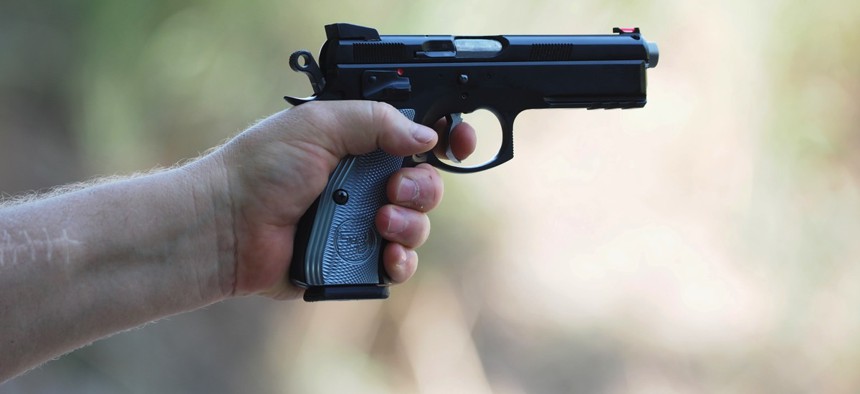Philadelphia Seeks a Cross-Sector Solution to Gun Violence


Connecting state and local government leaders
Recognizing federal and state policies are beyond their control, local officials want the City of Brotherly Love to become a national model for reducing firearm-related crimes.
Philadelphia formed its Special Committee on Gun Violence Prevention in search of a cross-sector solution to mounting homicides and aggravated assaults with firearms.
So far in 2017, homicides spiked 16 percent to 177 as of July 26, according to the Philadelphia Tribune, and aggravated assaults with a gun 5 percent to 1,200 as of July 16.
A total of 232 people younger than 24 were shot as of July 1, many in the city’s two most dangerous police districts, the 22nd and 25th.
“A neighborhood like this, where there are gunshots regularly, those gunshots become an environmental hazard that people try to avoid. It’s like a flood, an oil spill,” Robert Kane, Drexel University criminologist, told WCAU-TV / NBC 10. “It becomes this self-perpetuating, transgenerational cycle and the economic opportunities still don’t exist here.”
Having already established an Office of Violence Prevention earlier in July, Mayor Jim Kenney’s administration is looking to collaborate with City Council, law enforcement and individual neighborhoods on a holistic approach to mitigating gun violence.
Council President Darrell Clarke called the move a long time coming, while Councilman Kenyatta Johnson pointed out just how much Philadelphia invests across departments in anti-violence programs—to be reassessed by the new office—annually.
“If you’re spending $60 million and shootings are increasing and homicides are increasing, then something is wrong with the strategies,” Johnson told Philly.com.
Some on the committee, like Clarke, blame U.S. and Pennsylvania policies encouraging gun proliferation for the violence the community now faces, but they’ll look to address the causes Philadelphia can actually control.
The committee consists of subcommittees on illegal guns, public health, social services, outreach, program review, and victim advocacy.
“While any one city is limited in what it can do about the gun industry, we absolutely can attack other factors—whether they are poverty, lack of educational opportunity, neighborhood disinvestment, and more,” Clarke said in a statement. “By bringing leaders in government, law enforcement, public health, and community engagement together, we can develop informed, comprehensive strategies that will be of service not just to Philadelphians, but to communities across the country.”
The comprehensive approach will ensure residents actually take advantage of any anti-violence programs funded.
City officials also want to better understand the impact of gun violence on the community.
“I know for a fact you have some hardworking antiviolence activists out on a daily basis who don’t have a chance at funding . . . and you have organizations that are great at analysis, but they’re not actually out in the community touching people,” Johnson told Philly.com. “Let’s make sure we’re being effective and intentional with our strategies of reducing gun violence.”
Dave Nyczepir is a News Editor at Government Executive’s Route Fifty and is based in Washington, D.C.

NEXT STORY: Looming Threat to 'Dreamers,' Immigration Crackdown Stokes Fears in Local Communities





